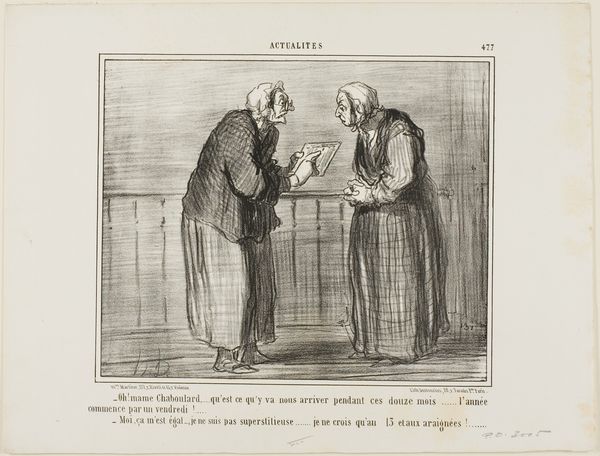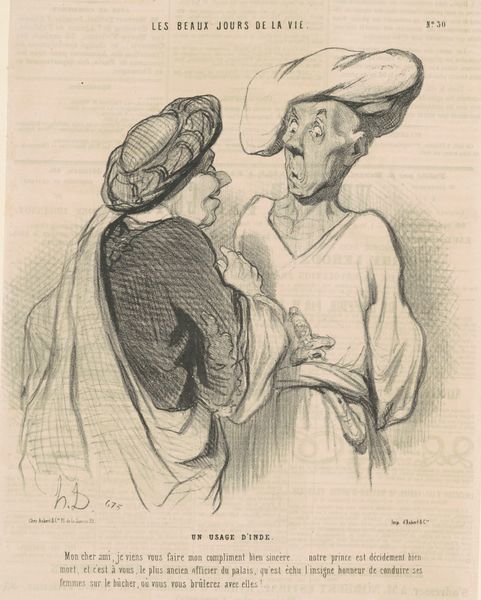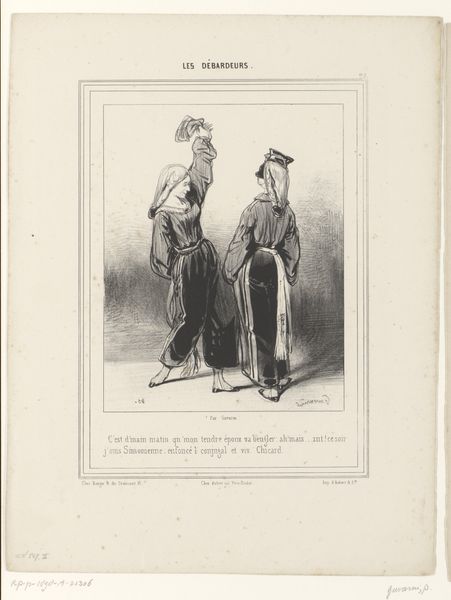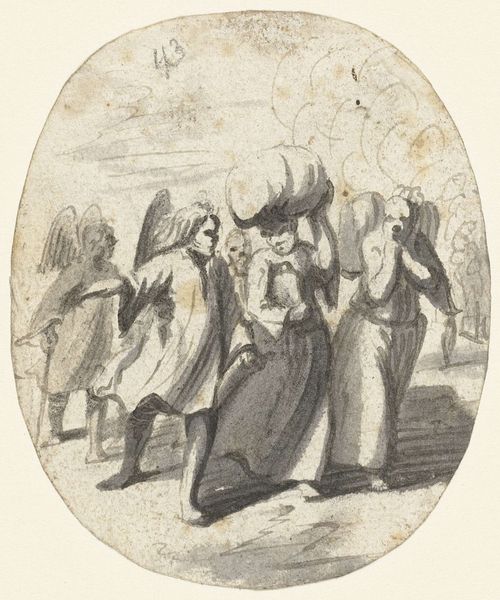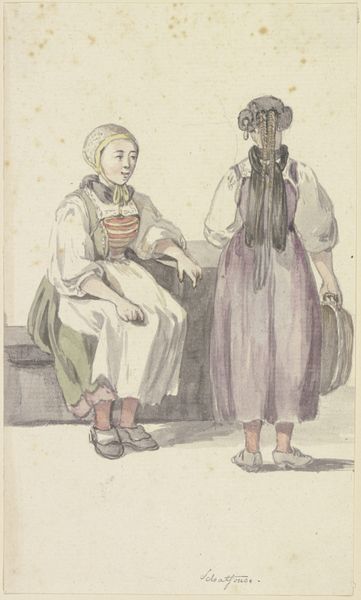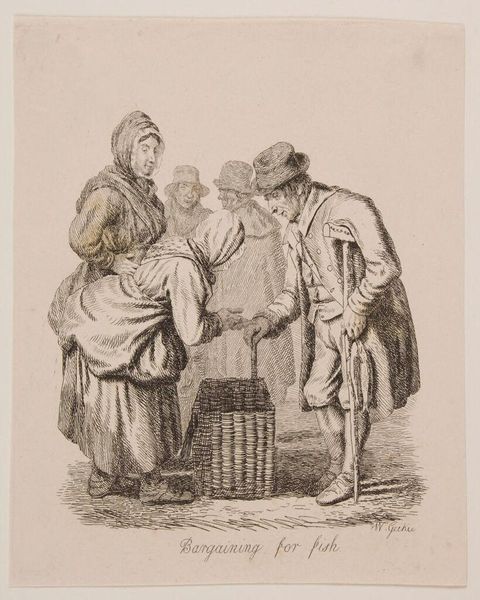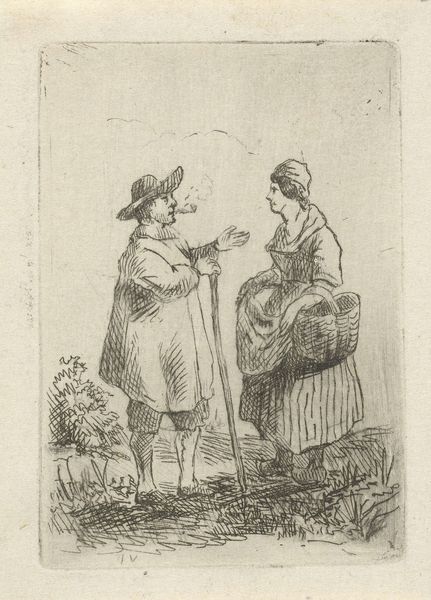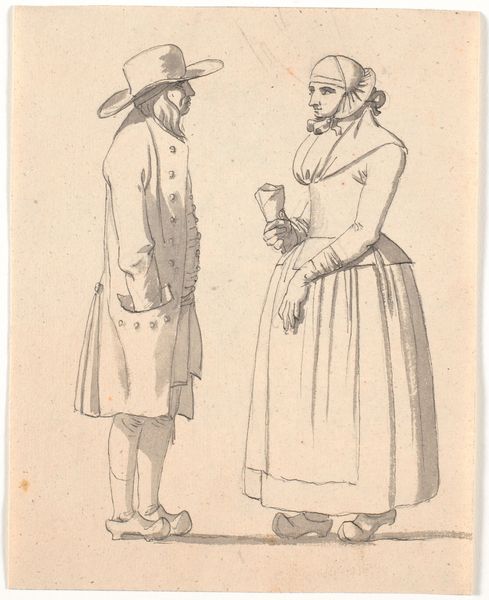
drawing, lithograph, print, paper
#
drawing
#
lithograph
# print
#
caricature
#
pencil sketch
#
paper
#
romanticism
#
genre-painting
Copyright: National Gallery of Art: CC0 1.0
Curator: This lithograph, entitled "Poids et mesures," which translates to "Weights and Measures", is a print made by Honoré Daumier around the 19th century. The immediate feeling is one of tension, wouldn’t you agree? Two figures face off, locked in some unseen argument, rendered with a kind of exaggerated caricature. Editor: Indeed, the lithographic process lends itself well to this kind of pointed social commentary. Looking at the materiality, the coarse grain of the paper contrasts beautifully with the delicacy of Daumier's linework. Note the deep blacks he achieved—likely through multiple passes—giving real weight to the figures and amplifying their emotional charge. I'm also quite struck by the clear distinction in the social class conveyed through the clothing: simple clothes vs a rich woven shawl. Curator: That brings us to what is being depicted here. Through the strategic use of caricature, the two figures become stand-ins for specific cultural and societal roles. The title suggests a conflict between traditional, possibly rural values ("Weights") and a more abstract, perhaps modern concept ("Measures"). These could be women arguing over a price, or a measurement gone wrong at a shop. Notice how Daumier renders the weight and scale not in actual form but rather implied through these archetypes and gestures. The use of implied symbols and iconography allows Daumier to transcend this local drama and provide insight into larger social tensions in 19th century French society. Editor: Right. The social context is critical. Lithography allowed for mass production and distribution of such images, thus disseminating critical social commentaries widely through print culture. Considering that so much labor went into this process -- from the artist to the printers to the distributors to those purchasing and displaying the prints, they truly are accessible pieces of political and cultural critique. Curator: Looking more closely at the composition itself, I'm particularly struck by how Daumier utilizes line to convey texture, character, and movement within such a confined scene, yet the scene also provides enough visual anchors to signify something larger. Editor: It all comes down to the act of production itself. The materials and method reveal that it served the needs and demands of a wider audience hungry for social and political critiques delivered in easily consumable, reproducible ways. The physical work involved echoes Daumier’s broader commentary on the social stratification inherent to everyday life. Curator: It’s a beautiful thing to consider how an artist’s commentary on societal change, rooted in the 19th century, remains relevant. Editor: It also highlights how vital material culture can be for unpacking historical context and challenging traditional art hierarchies.
Comments
No comments
Be the first to comment and join the conversation on the ultimate creative platform.
